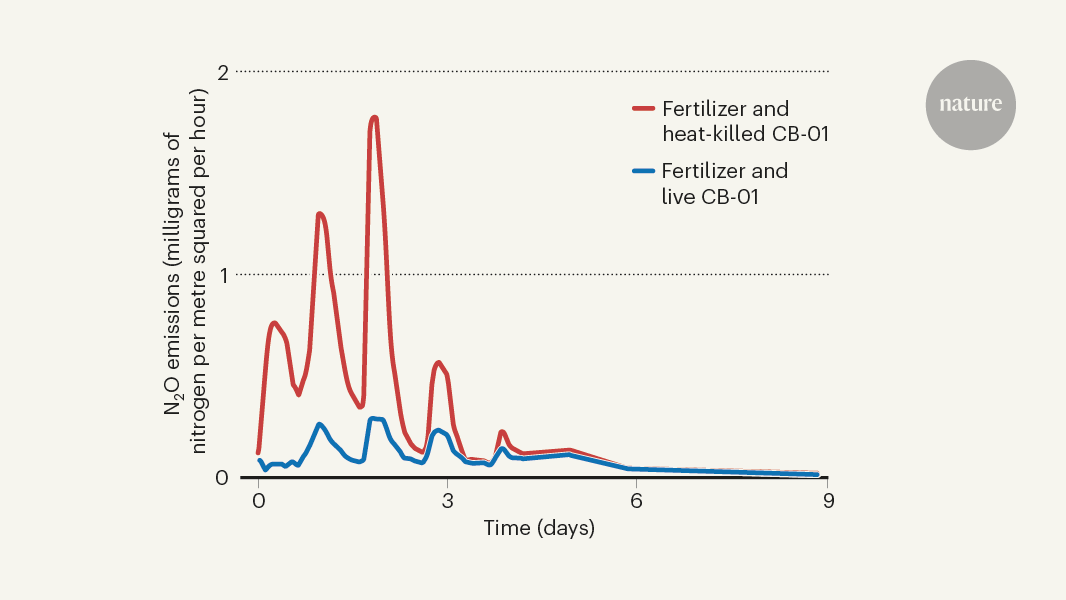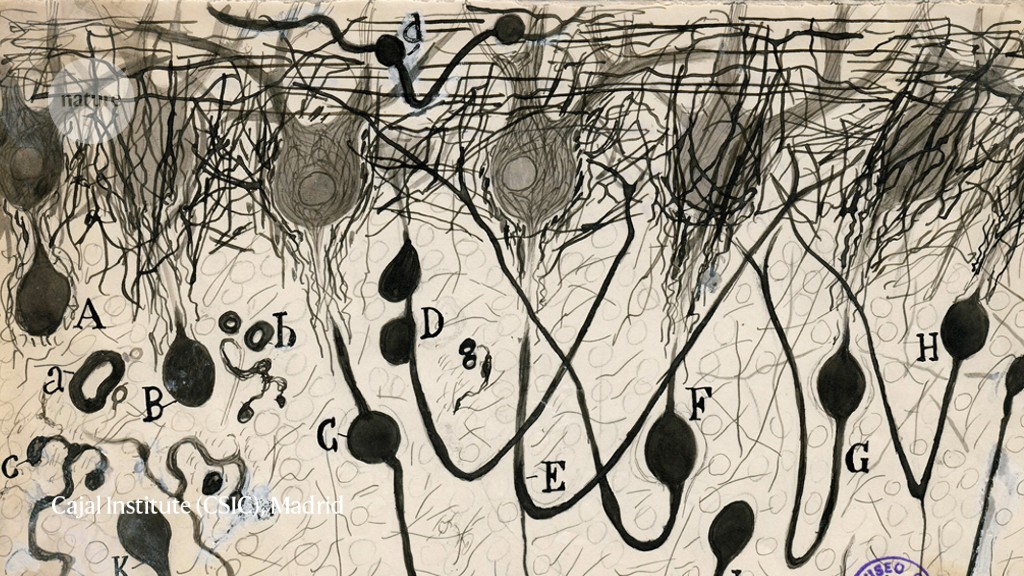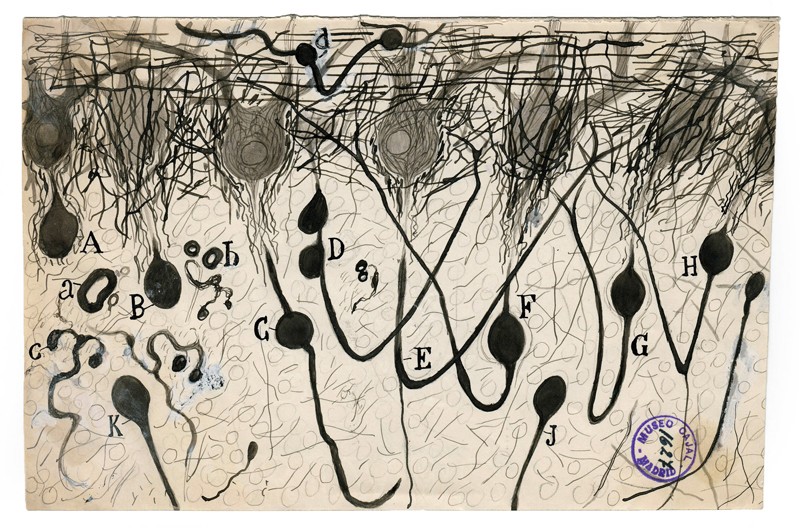The Brain in Search of Itself: Santiago Ramón y Cajal and the Story of the Neuron Benjamin Ehrlich Farrar, Straus and Giroux (2022)
Is the brain’s grey matter a continuous network of fibres? At the end of the nineteenth century, this was a contentious question, with high-stakes implications: an opposing theory that the grey matter was made of separate cells had gained traction by 1906, when the Nobel prize honoured two giants of neuroscience for work on the structure of the nervous system. The laureates embodied the hostile extremes of the dispute, a feud that has gone down in the annals of science history.
Camillo Golgi, who clung to the continuous-web theory, abused his Nobel acceptance speech to attack his younger co-laureate, Santiago Ramón y Cajal. Cajal behaved himself at the ceremony, but elsewhere, he had described Golgi’s stubbornness as “a typical case of the crippling influence of theoretical prejudice”.
Cajal was proved right. His delicate tissue preparations clearly showed tiny gaps between individual brain cells. His work has been compared to that of Andreas Vesalius, the Renaissance physician whose exquisite drawings of his own anatomical dissections revolutionized medicine. Cajal’s immense artistic skills similarly led him to profound insights into brain development and function, most of which have stood the test of time.
He began his life as a juvenile delinquent in the remote Pyrenean mountains of northern Spain, relates Benjamin Ehrlich in his deeply researched book The Brain in Search of Itself. The first major English-language biography of Cajal, it maps out his scientific work in broad strokes and describes his politically turbulent times. Such is the wealth of detail, however, that the narrative sometimes struggles to maintain its thread.
Cajal’s domineering father was determined that his son should follow in his footsteps as a physician. But Cajal was a reluctant pupil: he found rote learning difficult and kicked against discipline, resulting in beatings from his father. When he declared that he wanted to be a professional artist — he drew and painted obsessively — his father confiscated his brushes and sent him to a remote and harsh Jesuit secondary school, from which he absconded after a few months. At his next school, one teacher described him as “inattentive, lazy, disobedient, and annoying”. Another said he would end up in jail “if they do not hang him first”. Once, he taught himself to make gunpowder, constructed a cannon from junk and fired it at a neighbour’s house. That escapade earnt him a few days in jail.
Somehow, Cajal scraped his baccalaureate, and enrolled in medical school in Zaragoza, the region’s largest town. There, he came across the cell theory of German pathologist Rudolf Virchow, which held that the body, at least outside the brain, is composed of individual basic units of life. Excited, Cajal sought out the university’s only microscope and looked down at a frog whose cells were rendered visible by a pink stain derived from cochineal insects.
Revolution was rumbling during the years of Cajal’s education, and Spain’s colonies, particularly Cuba, were struggling for their independence. In 1873, when he graduated, the first Spanish republic was declared and Cajal was conscripted into the army’s medical corps. Dispatched to Cuba, he became so ill with malaria that he requested discharge.
Thin and in poor health, he taught at his alma mater and prepared for his doctorate. Browsing a medical supply shop while in Madrid for an exam, he saw the most advanced microscope then available. It cost more than half his yearly income; he used his army discharge money to help buy it.
Microscopy methods
Cajal shut himself in the attic of the family home, learning how to prepare tissue for microscopy and drawing or photographing his preparations. At 31, he landed his first faculty position, in Valencia. He wrote a textbook of histology, which surveyed all tissues of the human body except the brain. That was too difficult to stain. On another fateful visit to Madrid, he was introduced to a staining technique called la reazione nera — the black reaction — developed by Golgi some years earlier. It displayed nerve cells beautifully.
Cajal refined the highly unreliable method. Now in Barcelona, he isolated himself with his microscope and brain preparations and saw individual cells wherever he looked. He founded a journal, The Trimonthly Review of Normal and Pathological Histology. Its inaugural issue, in May 1888, described the first unequivocal evidence that the brain was made of individual cells. Cajal sent copies to leading scientists abroad; he got no response. The next year, at an international congress in Berlin, his work was finally recognized. He shot to fame. Golgi was enraged that his own method had been used, as he saw it, against him.
Cajal was a prolific, flowery writer who published popular science and novels as well as innumerable academic papers. He developed new stains for nerve cells and described the development and evolution of the nervous systems in other species. He elaborated all this in the two-volume Textura del sistema nervioso del hombre y los vertebrados (Texture of the Nervous System of Man and the Vertebrates, 1899–1904) — 2,000 pages of text with nearly 1,000 of his own illustrations.
Ehrlich paints a vivid picture of a strong, driven character, anti-authoritarian, anti-elite and brash. But he doesn’t develop how and why Cajal’s discoveries have been so fundamental to modern neuroscience. None of Cajal’s drawings is included, an incomprehensible omission. There is an occasional misinterpretation; for example, he implies that Cajal had a dig at Golgi in his Nobel acceptance speech, but the passage he quotes refers to other scientists.
Still, the narrative is charming. In his late sixties, Cajal found himself behaving like Golgi. A younger colleague developed a new stain that enabled him to see even finer structures than Cajal had been able to see. He used it to show two distinct types of glial cell — non-neuronal brain cells. Cajal had judged these cells, which he called the “third element”, to be homogeneous. Incensed, Cajal dismissed the discovery. Unlike Golgi, he later reflected on his behaviour and apologized.







More News
Nitrogen-hungry bacteria added to farm soil curb greenhouse-gas emissions
Streamflow seasonality in a snow-dwindling world – Nature
The complete sequence and comparative analysis of ape sex chromosomes – Nature